100th Anniversary Great Nave Tour at the Cathedral of St. John the Divine
Celebrate the 1925 construction of the stunning nave inside the world's largest Gothic cathedral!


Residing unsuspectingly at the Our Lady of Lebanon Maronite Catholic Cathedral in Brooklyn Heights is a set of doors that were once the dining hall doors on the French ship the SS Normandie. When the ship sank in 1942 in New York City due to the carelessness of construction workers, the spectacle of flames and firemen attracted a crowd. Salvaged from the bottom of the Hudson River, the SS Normandie was sold for parts, including the ship’s dining hall doors. After being resized to fit the entrance of the church, the doors now serve as the Henry Street entrance.
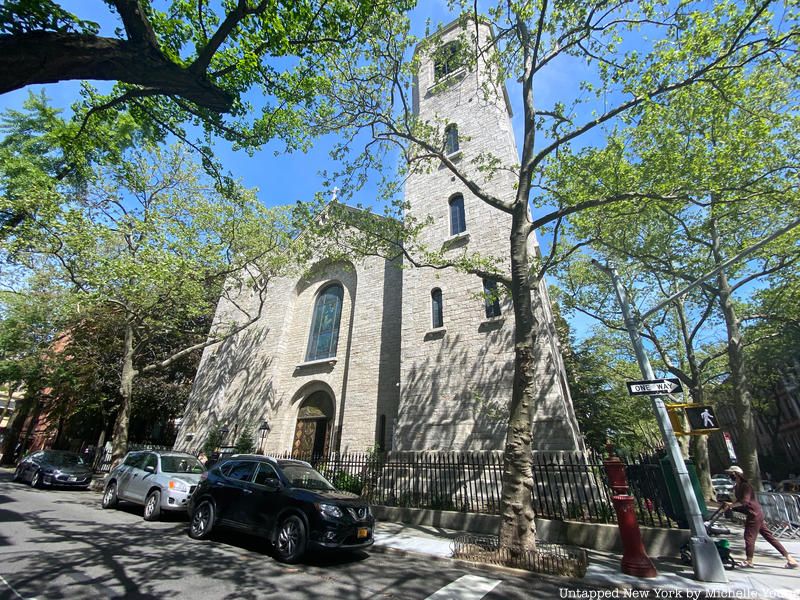
The SS Normandie began its career as an ocean liner as the largest and fastest passenger ship of its time. With the ability to cross the Atlantic Ocean in 4.14 days, the ship still holds the record as the most powerful steam turbo-electric-propelled passenger ship ever built.
The flagship of the Compagnie Générale Transatlantique, a French company that specialized in shipping and ocean liners, the SS Normandie made 139 westbound transatlantic crossings that finished in New York City. However, when the presence of German U-Boats rendered the ocean too dangerous to cross, the SS Normandie remained in Manhattan’s Pier 88, now known as the Manhattan Cruise Terminal.
After the Germans took over France on May 15, 1941, the US seized the SS Normandy and took legal custody of the ship. When the United States entered World War II in 1941 following Pearl Harbor, the US Navy took control of the ship and renamed it the USS Lafayette.

During this transition, members of the Robins Dry Dock and Repair Co. from Red Hook, Brooklyn attempted to transform the ship from a luxury ocean liner into a capable warship. Nearing the end of the transformation, tragedy struck when workers who were stripping wood fittings and welding fixtures accidentally ignited a pile of Kapok life jackets. With the ship still being transformed, there were piles of wood throughout the ship that aided the spread of the fire. The ship’s internal firefighting system along with its water pumps were deactivated, ruining any chances those on the scene had to save the SS Normandie.
The New York City Fire Department received a call at 2:45 p.m. on February 9, 1942. In the hours following, the FDNY brought rounds of ground units and boats including the John J. Harvey fireboat to put out the fire. By 2 a.,m., the fire crews had put out most of the fire and focused their efforts on saving the pier from any stray flames. Despite this success, the ship rolled over and sank, extinguishing any remaining fires at 2:45 a.m.
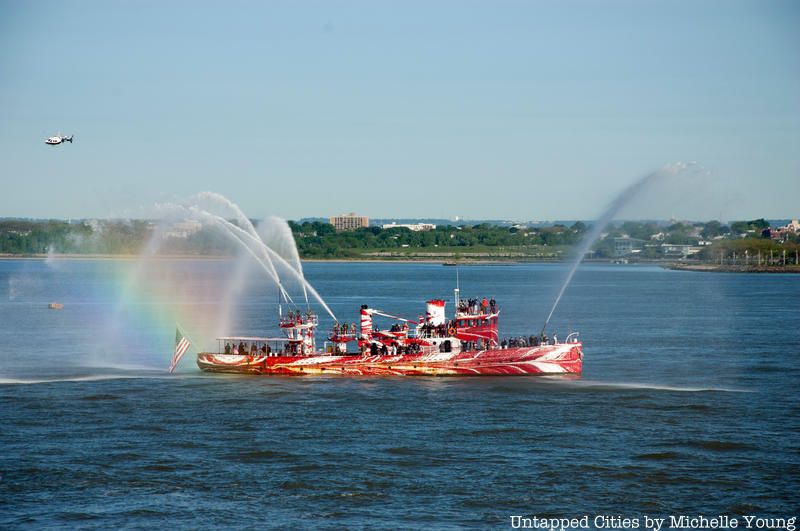
The SS Normandie remained at the bottom of the Hudson River for a year and a half until it was salvaged in 1943. Despite hopes to revive the ship for use in the war, the SS Normandie was abandoned, sold for scraps in October of 1946. Father Stephan of The Our Lady of Lebanon Maronite Catholic Cathedral purchased the doors that belonged to the super-imperial banquet room of the ship. A church spokesperson told us that he believed the church doors to be purchased in their entirety (confirmed also by a 1947 article in the Brooklyn Daily Eagle). The spokesperson says the back of the doors that resemble the doors of a ship.
Founded in 1944, the Our Lady of Lebanon Maronite Catholic Cathedral is in Brooklyn Heights. The architect of the church, Richard Upjohn (who also designed Trinity Church and and Grace Church) designed the cathedral in the Romanesque Revival style, which often features round towers with cone-shaped roofs and arches over doorways. It is for this reason why the arched doors from the SS Normandie fit the architectural style.
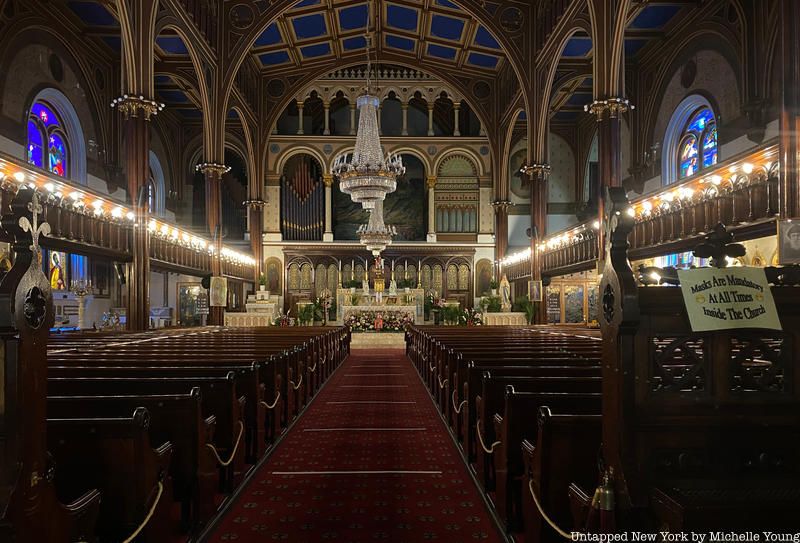
The doors were initially taller and wider and initially featured ten medallions adorned with images of cities in Normandy and the SS Île de France. However, only six of the medallions remain on the door at the main entrance of the Cathedral, as the doors were resized (and seemingly redesigned to compress the spacing, with nature motifs added as well). The other four medallions are now on a smaller set of doors at the Remsen Street entrance of the cathedral.
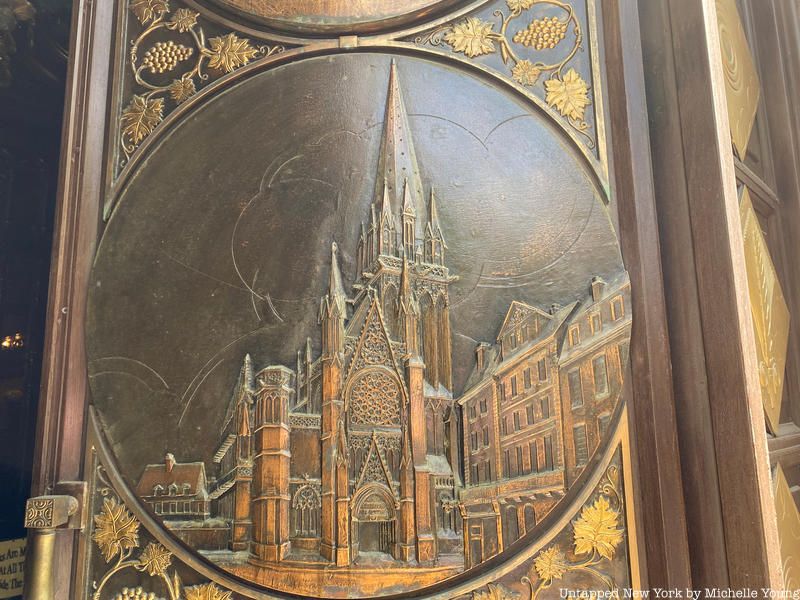
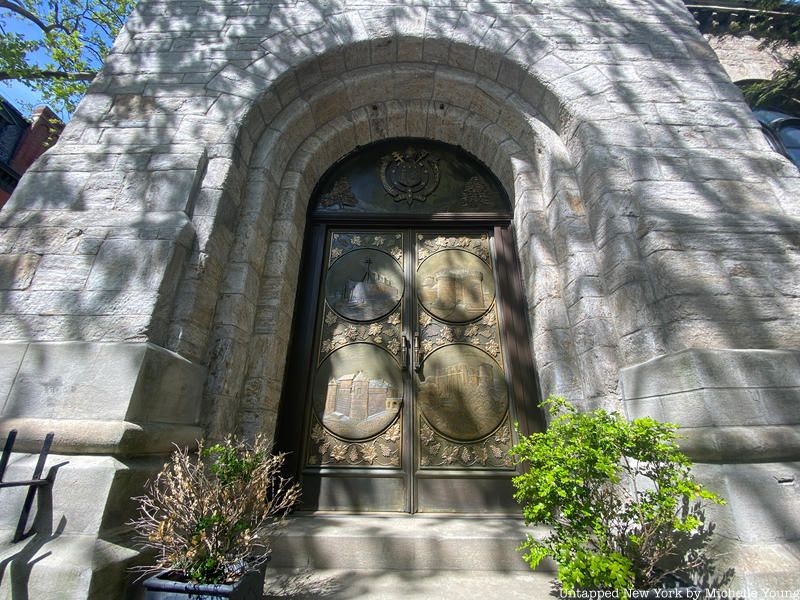
Grand ocean liners still exist today, but they are not as popular as in the era of the SS Normandie. Those who yearn to experience traveling across the Atlantic as those did during the 20th century can pay as low as $1,599 per person per voyage with ships such as the RMS Queen Mary II. However, for those who would rather let their imagination steer the ship, they can visit the Our Lady of Lebanon Maronite Catholic Cathedral for remnants of ocean liners of the past.
Next, check out the Top 10 Secrets of Brooklyn Heights.
Subscribe to our newsletter